Geology Reference
In-Depth Information
Polar easterlies
Polar high
Polar cell
Air falls, atmospheric
pressure is high
Air rises, atmospheric
pressure is low
Polar front
60
Westerlies
Air falls, atmospheric
pressure is high,
climate is dry over land
Horse latitudes
30
Northeast
trade
winds
Doldrums
Air rises, atmospheric
pressure is low,
climate is wet
over land
0
Southeast
trade
winds
Air falls, atmospheric
pressure is high,
climate is dry over land
Horse latitudes
30
Westerlies
60
Air rises, atmospheric
pressure is low
Polar cell
Polar easterlies
◗
Figure 15.16
The General Circulation Pattern of Earth's Atmosphere Air fl ows from high-pressure
zones to low-pressure zones, and the resulting winds are defl ected to the right of their direction of
movement (clockwise) in the Northern Hemisphere and to the left of their direction of movement
(counterclockwise) in the Southern Hemisphere. This defl ection of air between latitudinal zones
resulting from Earth's rotation is known as the Coriolis effect.
80
60
40
20
0
20
40
Semiarid
Arid
60
80
◗
Figure 15.17
The Distribution of Earth's Arid and Semiarid Regions Semiarid regions receive more
precipitation than arid regions, yet they are still moderately dry. Arid regions, generally described as
deserts, are dry and receive less than 25 cm of rain per year. The majority of the world's deserts are
located in the dry climates of the low and middle latitudes.















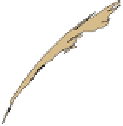





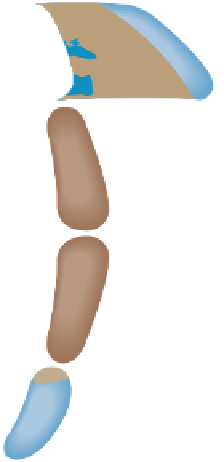
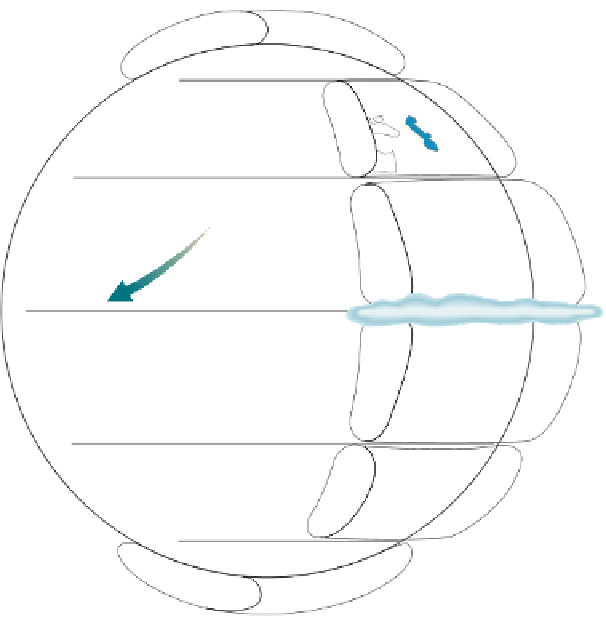















































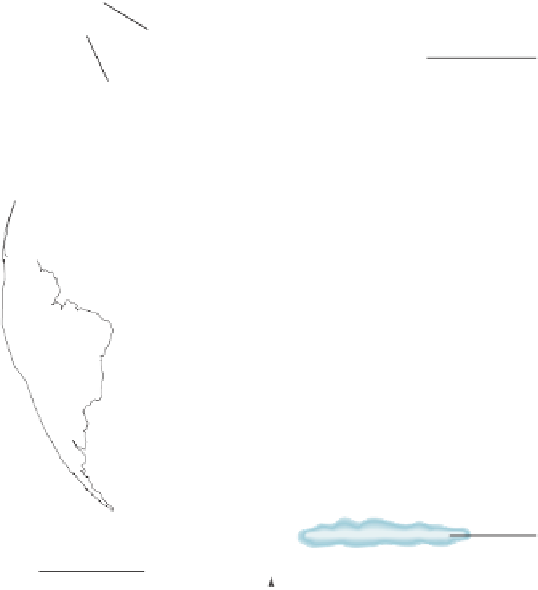











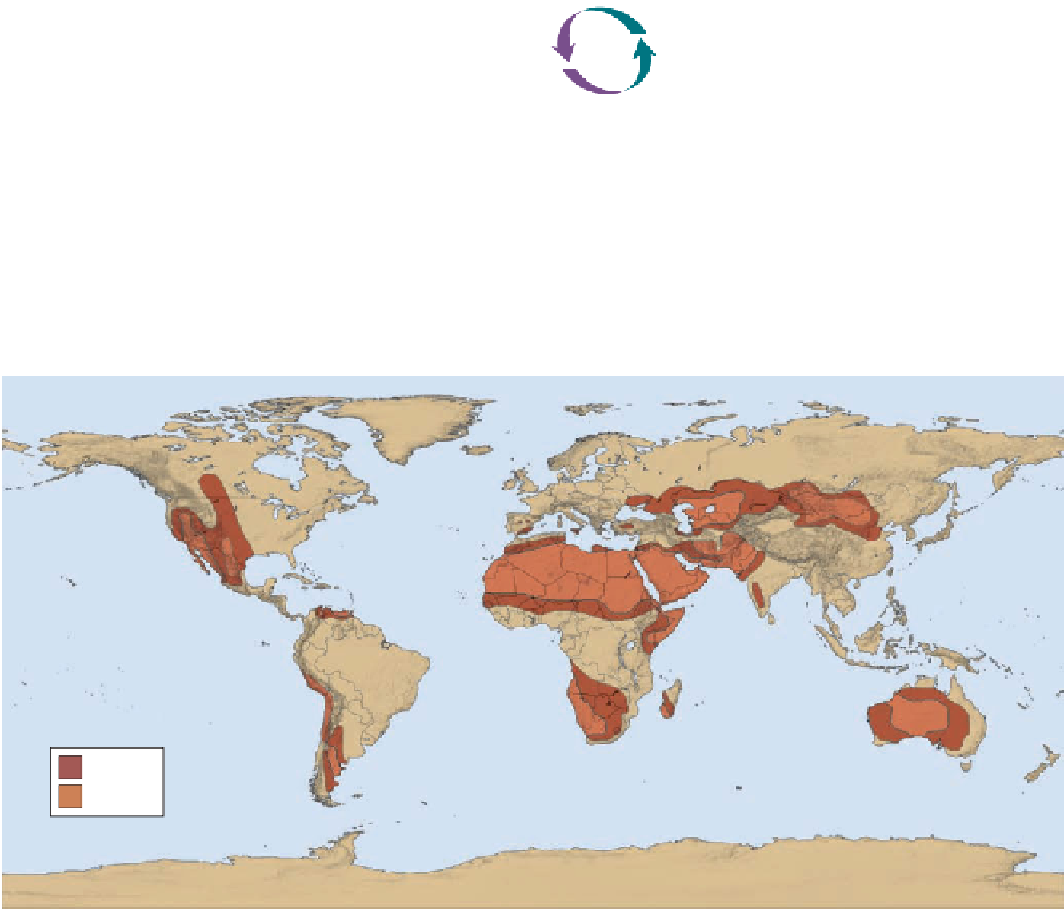









Search WWH ::

Custom Search